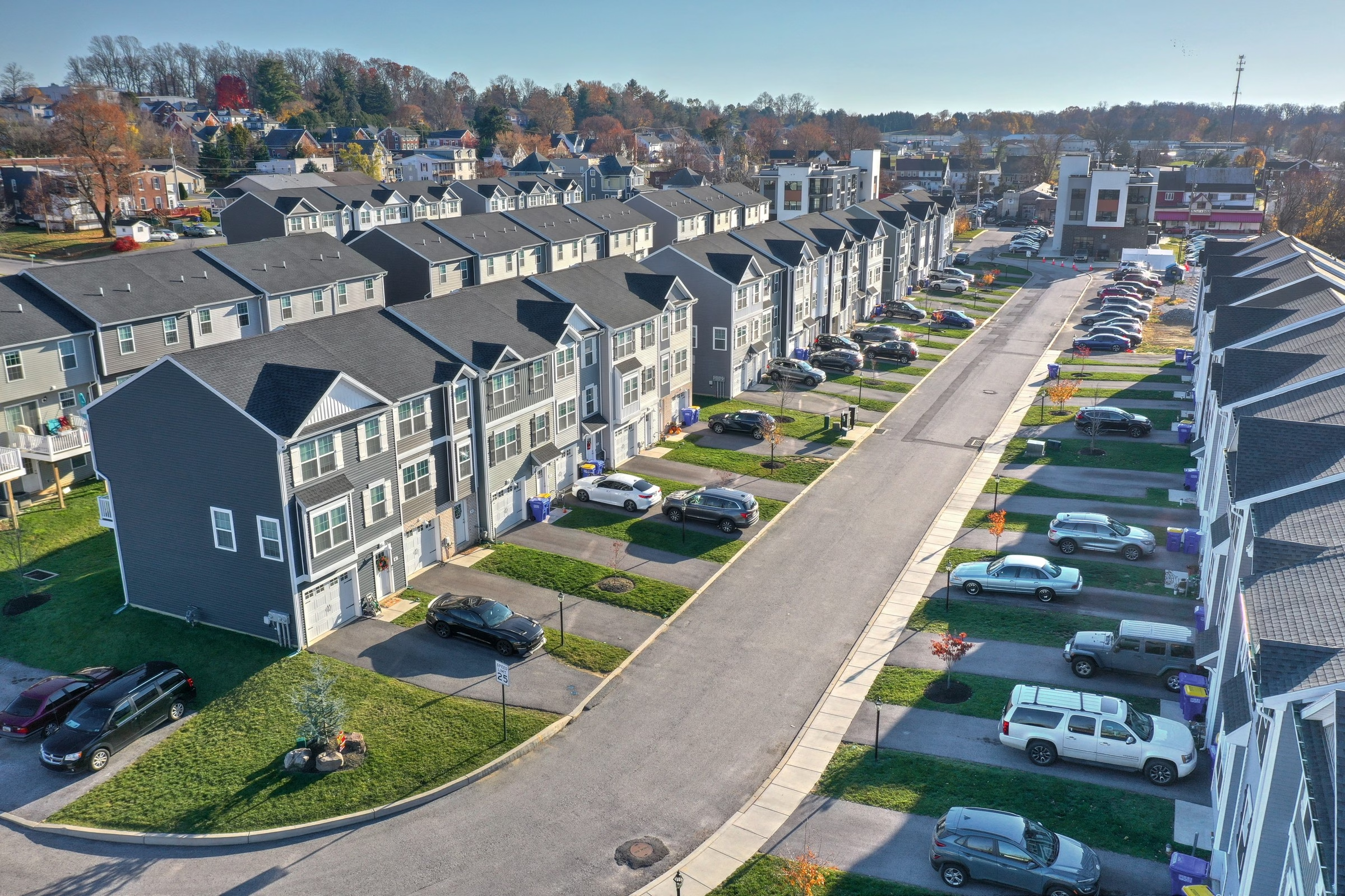Frequently I talk to developers and builders about their projects.
Usually, the story they share is how going to the township meeting is more like a combat mission and less like a victory lap. Even though our country needs more housing units in every price range, they are treated like hostile invaders instead of welcome comrades.
Construction Costs and Tariffs
The costs to build an apartment unit or single-family home continue to increase. By the time Land, infrastructure costs, permitting fees, labor and material costs are taken into account, the costs of an apartment unit can surpass $225,000 in our region.
These costs are not even taking into account any impact from Tariffs. The National Association of Builders expect that impacts on construction costs will be minimal on the cost of a home, as many components like lumber are already sourced in the US.
- In talking with numerous developers, the prevailing current view — for now — is construction costs will increase 1-3% on wood-frame builds (which represent the vast majority of apartment/SFH projects).
- The impact is likely higher if you’re building steel-frame high rises (which were already becoming cost prohibitive even prior to tariffs), relying heavily on Canadian lumber, and/or sourcing most materials from China.
Why is Building so expensive?
What does add a significant burden to housing cost is regulation- at the Local, State and Federal level in many forms.
Everything from environmental conditions on protected species (Bog turtle anyone?) storm water maintenance permits, and site conditions like traffic lights with infrastructure upgrades, increase the cost for each housing unit accordingly.
- To build affordable housing, many developers have relied on tax credits and government incentives which come with strings attached but much needed financing incentives. However, these incentives come with multi-year timeframes and rent restrictions, making the ‘Affordable Housing unit’ even pricier.
- Because of this increase in cost with subsidies, many developers have begun turning away from tax credits, grants and government aid to expedite the process. In the extreme, the cost of building affordable housing in Los Angeles regularly tops $1 million per unit, nearly double the cost in states like Georgia, Texas and Arizona, according to a report from the U.S. government.
- In some areas, “permitting fees, inspection fees, zoning difficulties” comprise 40% of multifamily and 20-25% of single-family development costs.
The Cost to Build a Single Family Home
On the single-family side, The National Association of Home Builders has produced their survey for 2024 which details the breakdown of actual costs.
NAHB’s most recent Construction Cost survey shows that, on average, 64.4% of the sales price is due to construction costs and 13.7% to finished lot costs. On average, builder profit is 11.0% of the sales price.

- Keep in mind that the ‘finished lot price’ includes many development fees and permitting as well. In addition to permitting fees within the lot cost, the builder also pays the below fees directly as well, making up 7.6% of the total costs of a home.

Looking for more info on the cost report? Click here to read the full survey.
What can we do to help make new housing affordable?
Speaking out to help reduce the overall permitting and regulation cost will go far to increase the affordability and decrease the cost for every housing unit.
Here are a few ideas that you can participate in to help bring change:
- Get involved in your Municipality or County government. Much of the legislative burden comes from the most local level of housing planning, and being a voice for moderation will help.
- Contact your local government- County Commissioners, State Representatives and Senators. I can guarantee these officials want to see affordable housing, but may not know how best to bring it about. Encouraging them to focus on de-regulation will increase affordability.
- Join organizations like Urban Land Institute which advocate and educate for housing on all levels.
With a common-sense approach to regulation around housing, many more housing units will be added to our national supply. With more units available, housing becomes more affordable, because the balance of supply and demand can reach equilibrium.
Many clients we serve appreciate the practical approach we bring, to help the greater good while also running a profitable endeavor. Join us in advocating for “Yes in my backyard”, welcoming more building to bring housing to America.





